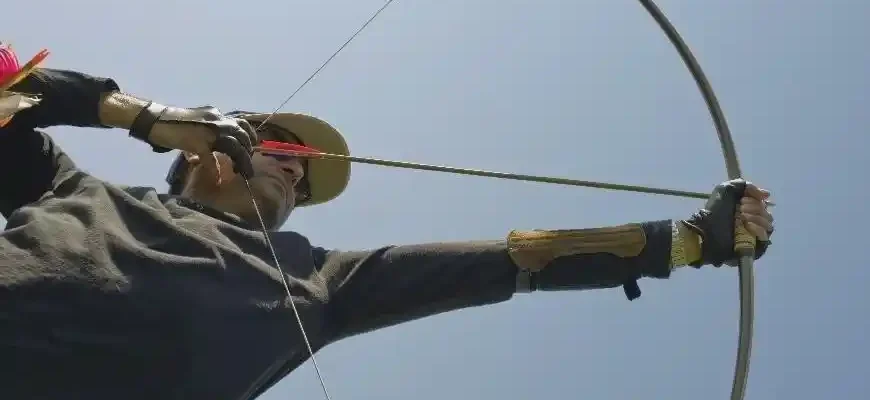Archery is more than just an ancient sport; it’s a skill that bridges the past with the present. Whether you’re looking to try something new or explore a sport that sharpens both the body and the mind, archery can be an exciting and rewarding pursuit. And trust me, after more than 50 years of experiencing it firsthand, I’m here to give you a deep, no-holds-barred look at everything you need to know to get started—backed by facts, expert insights, and some good-natured advice along the way.
Why Archery?
Before diving into how to learn archery, let’s take a moment to talk about why it’s worth learning in the first place. The benefits of archery are far-reaching, both for the body and the mind:
1. Physical Fitness
Archery is an excellent full-body workout. Contrary to popular belief, it’s not just about pulling a bowstring and letting the arrow fly. Proper technique engages your arms, shoulders, back, and core. It also improves your hand-eye coordination and fine motor skills.
Statistical Insight: Studies show that practicing archery can improve posture, strengthen muscles, and enhance flexibility, especially in the upper body. One survey conducted by the American Archery Association found that nearly 70% of regular archers reported improvements in shoulder strength and flexibility after six months of consistent practice.
2. Mental Health
The benefits extend beyond the physical realm. Archery is often referred to as a “moving meditation.” The focus required to hit a target helps reduce stress, improve concentration, and enhance mental clarity. It’s also a fantastic way to disconnect from the digital world and practice mindfulness.
Psychological Benefit: Archery helps with stress management and focus. Research published in the Journal of Sports Science & Medicine shows that engaging in archery can lower cortisol (stress hormone) levels, making it a highly effective form of relaxation.
3. Discipline and Patience
The sport teaches patience, persistence, and discipline. Archery isn’t about immediate gratification; it’s about steady progress. Every arrow you shoot contributes to your skill development, and each day you practice, you get just a little bit better.
Cultural Insight: Many archers speak of the “Zen of the bow.” It’s the quiet concentration, the way it forces you to be present in the moment, that makes the sport so compelling.
4. Social Connection
Archery isn’t just an individual sport. While you’re on the range, you’ll meet people of all ages, backgrounds, and skill levels. Many archers form tight-knit communities, participating in leagues, competitions, and even archery-based events for charity. You’ll find that the sport fosters camaraderie and mutual support, with everyone willing to share tips and cheer each other on.
Getting Started: The Basics
Now that we’ve covered why you should consider archery, let’s talk about how to get started.
Step 1: Choose the Right Equipment
Getting the right gear is key. Here’s what you’ll need:
- Bow: There are several types of bows, each with its pros and cons:
- Recurve Bow: Most commonly used in Olympic archery. Great for beginners.
- Compound Bow: Uses pulleys to assist in drawing the string, making it easier to hold. Best for those who want to shoot with more power and precision.
- Longbow: The traditional style, requiring more strength to draw and control. It’s a challenge but offers a more “authentic” experience.
- Arrows: These vary in length and stiffness, depending on your draw length and bow. It’s crucial to get arrows that match your bow to ensure accuracy.
- Quiver: A container to hold your arrows. Most archers have a side quiver (worn on the hip) or a back quiver (slung over the shoulder).
- Finger Protection/Glove: A finger tab or glove protects your fingers from the bowstring. As a beginner, you’ll want something that helps you maintain control.
- Armguard: This protects your forearm from being struck by the bowstring, especially when you release the arrow.
Step 2: Learn the Basic Stance
Proper form is crucial to becoming a good archer. Here’s how you set yourself up:
- Stance: Stand with your feet shoulder-width apart, perpendicular to the target. Your body should be relaxed, but your core engaged.
- Grip: Hold the bow lightly with your non-dominant hand. The grip should be relaxed—too tight, and you’ll introduce tension that could throw off your shot.
- Drawing the Bow: Use your back muscles to draw the bowstring rather than your arms. This will give you more power and accuracy.
- Release: This is where things get tricky. You want to release the string smoothly, without jerking it. A smooth release prevents the arrow from veering off course.
Step 3: Safety First
Safety in archery cannot be emphasized enough. Always be aware of your surroundings. Never aim an arrow at anything you don’t intend to shoot, and always make sure you’re shooting in a designated area.
Important: Always check that the target area is clear of people, animals, and obstacles before shooting.
Step 4: Practice, Practice, Practice
Archery is a skill, and like any skill, it takes time to develop. Start with close-range shooting (about 10-15 yards) and gradually increase the distance as you improve. Consistency is key, so practice regularly, even if it’s just for a few minutes a day.
Step 5: Get Professional Instruction
While learning archery on your own is possible, working with an instructor can fast-track your progress. They can teach you proper form, help you avoid common mistakes, and offer personalized feedback that will make you a better archer.
Statistical Insight: According to a survey by the National Archery Association, archers who took lessons from a certified coach improved their scores by an average of 20% in just three months.
Common Pitfalls to Avoid
While archery is accessible, it can be frustrating if you don’t approach it with patience. Here are a few common mistakes beginners make—and how to fix them:
1. Using the Wrong Bow Size
It’s tempting to get the flashiest bow on the rack, but the right size is essential. If the draw weight is too high or the bow is too big, you’ll struggle with control.
Solution: Visit a local shop and get measured. If possible, try out a few different bows to see which one feels right for you.
2. Ignoring Proper Form
Improper technique can lead to poor accuracy and, over time, even injury. Bad posture, stiff shoulders, and incorrect hand placement can all throw off your shot.
Solution: Take a few lessons to learn the fundamentals, and don’t skip the warm-up!
3. Being Too Hard on Yourself
Archery is all about consistency. If you miss a few shots, don’t get discouraged. Every great archer has missed thousands of arrows.
Solution: Stay patient. Celebrate small victories along the way.
4. Skipping Safety Protocols
Archery can be dangerous if not practiced safely. Never underestimate the importance of safety rules.
Solution: Always check your surroundings, wear safety gear, and be vigilant.
Real Voices on Archery: What People Are Saying
Here’s what people from different walks of life are saying about archery:
- Sarah, 28, USA: “I took up archery last year as a way to relieve stress. I never imagined how much focus it would require. But honestly, I love it. It’s challenging but in the best way.”
- Rafael, 52, Spain: “I’ve been shooting for decades now, and what I can tell you is that archery has kept me fit both physically and mentally. It’s a lifelong sport, and there’s always something new to learn.”
- Ayesha, 40, India: “I began archery as a way to bond with my son. We started together, and now it’s our shared activity. It’s helped me build discipline and patience, something I didn’t expect from a sport like this.”
- Kwame, 34, Ghana: “In our village, archery is part of our tradition. I started as a young boy, and now it’s a way of life. Archery keeps me connected to my roots.”
- Lina, 60, UK: “I never thought I could start something new at my age, but archery has proved me wrong. It’s never too late to pick up a bow and start shooting.”
Conclusion: Your Archery Journey Awaits
Archery is a sport that welcomes everyone, regardless of age or background. It’s a rewarding, challenging, and social activity that can improve your physical health, mental clarity, and overall well-being.
If you’re serious about learning, start with the basics, practice regularly, and be patient with yourself. The arrows will fly straighter as you progress, and before you know it, you’ll be hitting that bullseye with confidence. So, pick up that bow and let the adventure begin!
FAQs
Q: How long does it take to get good at archery?
A: It depends on how often you practice, but most beginners see noticeable improvement in 1-3 months with consistent practice.
**Q:









